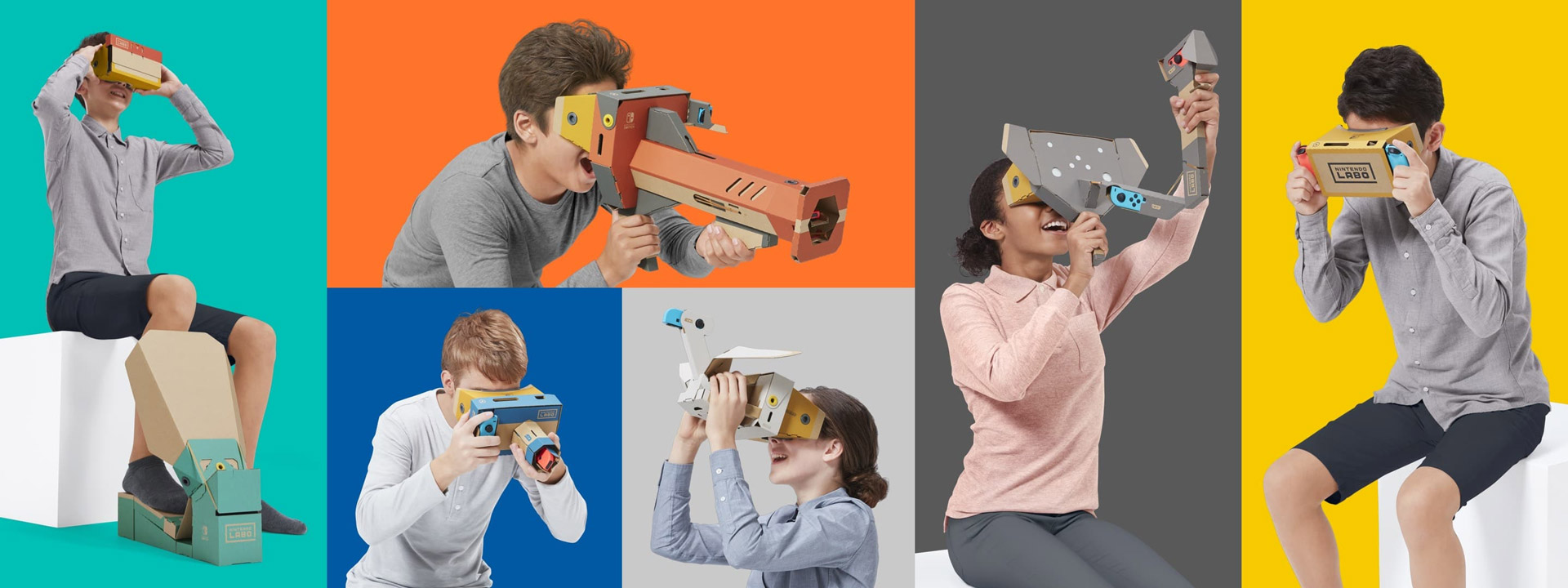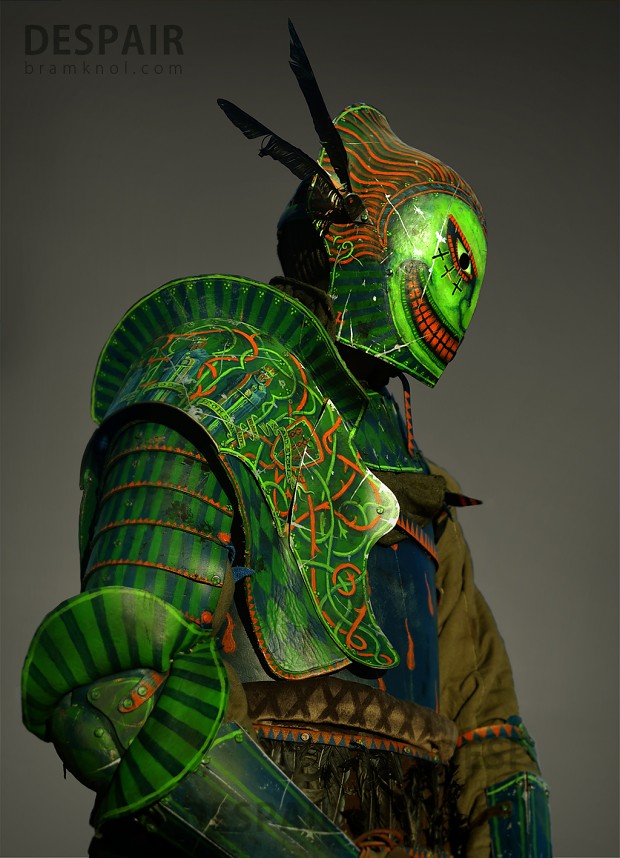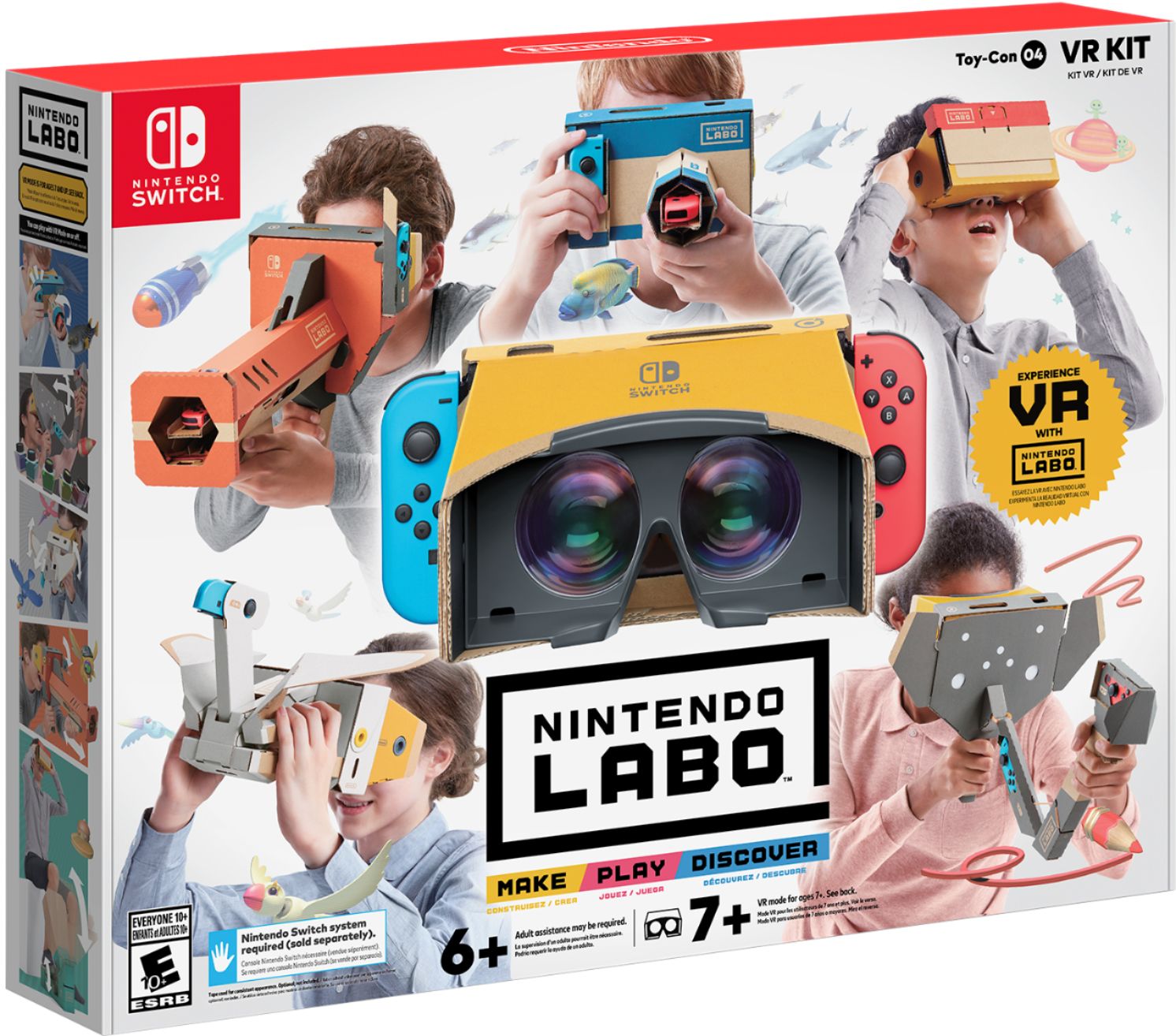
The Nintendo Labo line is pure Nintendo charm and creativity, giving you a box full of cardboard sheets that can be folded and constructed into proper gaming peripherals. Just slot in your Switch screen and/or Joy-Con controllers and it comes to life, whether it's a playable cardboard piano or a little car-like toy that can physically jitter around your floor.
That's the case again with the VR Kit, which at its core looks pretty identical to Google's Cardboard initiative from a few years back. This one has a plastic base inside for stability and to house the lenses, but otherwise, the external shell is all cardboard. Still, we're guessing it'll be a quick build – not an hours-long adventure like the piano.
Hackers have released video of the Nintendo Switch’s “VR Mode” firing up, implying that Nintendo’s experiments with VR progressed to the point of being tested on the unit before the company put the idea aside. Back in 2016, Nintendo of America CEO Reggie Fils-Aime told reporters that the company wasn’t interested in the capability because the technologies hadn’t gone mainstream yet and weren’t guaranteed to be well positioned to catch consumer interest. While that may be true, clearly some work was done at Nintendo to make the Switch VR-capable — at least in theory.
Switch modder random666_kys posted a video (in response to a query from fellow hacker OatmealDome) showing the Switch’s Test VR mode firing up with a duplicated video field for each eye, as Ars Technica reports. The test demonstrates that the screen renders each half separately, in what appeared to be a mode you’d use by inserting the Switch into a headset designed for that purpose.
Switch Vram


- Buy Nintendo Labo VR Kit by Nintendo for Nintendo Switch at GameStop. Find release dates, customer reviews, previews, and more.
- Five Nights at Freddy’s: Help Wanted is a collection of classic and original mini-games set in the Five Nights universe. Survive terrifying encounters with your favorite killer animatronics in a.
- The Labo VR goggles serve as the centerpiece for all of Nintendo's virtual experiences. The Switch slides into the front, and you can then plug in the goggles to other Toy-Cons, like the Blaster.

https://t.co/wSPNcuuGVa
So I just tried and a screen appeared. Interesting… pic.twitter.com/MLiKfYpokb
— random (@random666_kys) August 8, 2018

Switch Vr Review
Apr 12, 2019 The Switch isn't a perfect fit for VR. It's a dip-your-face-in-for-a-bit type of experience that feels more like a novelty set of 3D glasses than a fully immersive VR experience. But it works well. Book a 60 minute session with you and your friends now! Free-roam multi-player virtual reality in Kansas City.
Also its really a different rendering mode because when something is drawn, it'll happear on the two parts of the screen. Example : https://t.co/WctYzTzRlk
— random (@random666_kys) August 8, 2018
There are a number of reasons for Nintendo to have moved away from this idea. First, the Switch is larger and heavier than most phones. Samsung’s Galaxy Note 9 is 6.37 inches long and 3 inches high, while the Switch is roughly 6.57 inches long and 4 inches high. The Note 9 is 7 ounces while the Switch weighs in at a bit over 10 ounces. It might still be possible to build an HMD to fit a device like the Switch, but the heavier and larger the screen is, the trickier that would be.
The other problem is the innate resolution of the Switch itself. Nintendo’s console is already a compromise between the horsepower required to render at living-room scale and the battery life and portability needed in a handheld device. If you’ve used the first generation Oculus Rift or HTC Vive you know that while these devices can be a lot of fun — Beat Saber is a current addictive favorite of mine — rendering clarity is not their strong suit. With a base resolution of 720p, most Switch content wouldn’t look great hanging directly in front of someone’s eyes.
The problem here, ultimately, is content. It’s not that Nintendo couldn’t find a way to make Switch VR literally work — after years of contending with the limited hardware available on the Wii, Wii U, and devices like the 3DS, we imagine the company’s employees and studio partners have a great deal of experience in finding ways to eke acceptable performance out of limited hardware. The problem most likely is that Nintendo doesn’t want to invest in creating a limited set of VR titles that won’t look nearly as good as the other work it’s shipping, or run as well.
Switch Vr Goggles
The solution to this problem, if Nintendo was serious about VR, would be a mid-cycle hardware upgrade to take advantage of considerable advances in process technology and hardware design. While the Switch is under 18 months old, the chip it’s based on, the Tegra X1, launched more than three years ago on a 20nm planar process. Moving to a 14/16nm design with FinFETs and an updated SoC would give Nintendo considerably more breathing room. It’s easy to imagine the company waiting for 7nm at this point and making a two-node leap, which would lead to yet more improvements.
But the question that also has to be asked is whether it makes sense for Nintendo to slew sideways into focusing on VR when the market for virtual reality is still so nascent and unproven? And that, unfortunately, remains unclear. Given the Switch’s meteoric popularity, there’s a reasonable argument to make that focusing on VR would just distract from the success the platform is already enjoying. With MS sitting out VR as well, there’s little reason for Nintendo to try and invent differentiation it doesn’t seem to need.
Switch Vr Mode
Now Read: Is the High-End VR Market Dead, Every Nintendo Switch Can Be Hacked and Nintendo Can’t Patch It, and Nintendo at E3 2018: Fortnite, Super Smash Bros, and More
